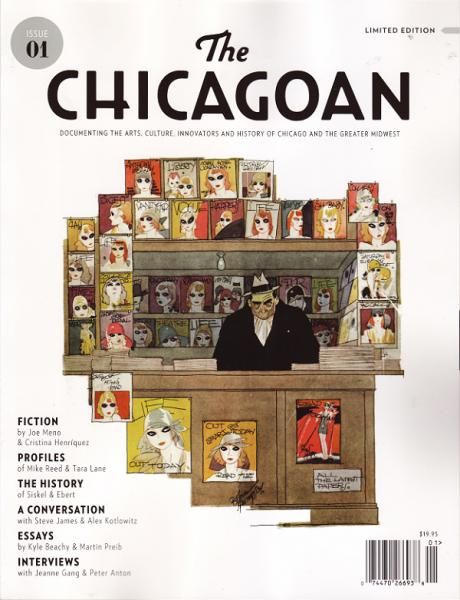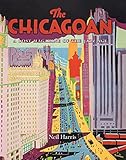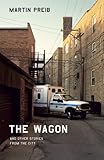
Chicago is called “The Windy City” not because of our winds (which are present, but not markedly above average), but because of our citizens’ historical propensity to go on about themselves. The nickname took root during a late 19th-century rivalry with Cincinnati. Both cities had a meatpacking industry and baseball, and this was enough to stir up a war of words. We fought, bafflingly, over rights to the nickname “Porkopolis,” and our dueling baseball teams, the Red Stockings and the White Stockings. The Cincinnati sports writers, tired of our braggadocio, made “windy city” stick.
And “The Second City” was not coined by A.J. Liebling in his outwardly snotty book about Chicago’s inferiority to New York. We earned that one in the 19th century as well, when the city burned to the ground and we built an entirely new city — the second city — in its place.
When even our monikers are misunderstood, Chicago, demonstrably, has reputation issues. We’re outspoken and resourceful, and everyone thinks we’re just losers getting blown about! Being a proud Chicagoan, then, can feel like a defensive position. Or, more optimistically, that all of our cultural treasures are a secret. Enter The Chicagoan, a new outfit whose mission is to “document the arts, culture, innovators and history of Chicago and the greater Midwest through long-form storytelling.”
 The original Chicagoan was a weekly magazine, modeled on The New Yorker, published from 1926 to 1935. It was hit or miss, quality-wise, and went unremembered until University of Chicago professor Neil Harris discovered its archive in the library, and then edited the collection (The Chicagoan: A Lost Magazine of the Jazz Age) that brought it all to our attention. Now JC Gabel, editor of the much more recently defunct Stop Smiling magazine, has relaunched the brand with The Chicagoan Issue 1, a 200 page limited-edition glossy number that’s heavy on design.
The original Chicagoan was a weekly magazine, modeled on The New Yorker, published from 1926 to 1935. It was hit or miss, quality-wise, and went unremembered until University of Chicago professor Neil Harris discovered its archive in the library, and then edited the collection (The Chicagoan: A Lost Magazine of the Jazz Age) that brought it all to our attention. Now JC Gabel, editor of the much more recently defunct Stop Smiling magazine, has relaunched the brand with The Chicagoan Issue 1, a 200 page limited-edition glossy number that’s heavy on design.
The Chicagoan as an organization also has digital editions, podcasts, and public events on its agenda, and Issue 1 acts as drum major for this cultural parade. Its greatest success would be to spotlight Chicago’s creatives in a way that excites the hometown crowd, intrigues the visitors, and leaves both eager to see more. Seen as a whole, I believe The Chicagoan has succeeded.
 In an effort to provide a balanced view of our city, the ten Chicago-focused features include seven about cultural innovators and three about crime. One feels a little jolt going back and forth between the two but, in a disheartening way, this may be quite an accurate reflection. The profiles are all proud and glowing (Chicago! We’ve got this great chef, and an amazing architect, and these cool music guys, and really good coffee!). The crime pieces, if it needs to be said, are more nuanced and gritty. Alex Kotlowitz, whose compassionate, participatory brand of journalism has focused on violence in Chicago for over a decade, is reliably worth looking in on. Here he is interviewed, along with filmmaker Steve James, about the “violence interrupters” they recently documented in The Interrupters. Chicago’s beat cop laureate Martin Preib, author of The Wagon, contributes a piece on the crime and confession that stay with him. I don’t want to sound flippant, but it’s nice to have these complicated, antireductive pieces in among the laudations. They stay with you much longer.
In an effort to provide a balanced view of our city, the ten Chicago-focused features include seven about cultural innovators and three about crime. One feels a little jolt going back and forth between the two but, in a disheartening way, this may be quite an accurate reflection. The profiles are all proud and glowing (Chicago! We’ve got this great chef, and an amazing architect, and these cool music guys, and really good coffee!). The crime pieces, if it needs to be said, are more nuanced and gritty. Alex Kotlowitz, whose compassionate, participatory brand of journalism has focused on violence in Chicago for over a decade, is reliably worth looking in on. Here he is interviewed, along with filmmaker Steve James, about the “violence interrupters” they recently documented in The Interrupters. Chicago’s beat cop laureate Martin Preib, author of The Wagon, contributes a piece on the crime and confession that stay with him. I don’t want to sound flippant, but it’s nice to have these complicated, antireductive pieces in among the laudations. They stay with you much longer.
The literary supplement includes the reliably great Joe Meno and a thinker on David Foster Wallace (the inclusion of which feels predictable but also might be the law? At least it’s out of their system). The last section, comprised of “dispatches from the Midwest,” is small but thoughtful.
The real gem of the issue, justifying high hopes for The Chicagoan’s future, is the marquee piece on the history of Siskel & Ebert. The 47-page oral history combines interviews with their coworkers, bosses, friends, and rivals to tell the story of two talented men who sat at the heart of American film criticism for decades. Hubris, competition, ambition, luck, friendship, cruelty, and tragedy make the history of a syndicated talk show read like Greek drama. If Gabel et al. continue to coax such compelling stories out of our city’s history, then they have nothing to fear save the demise of publishing.
Happily there is great camaraderie in being underrated, and Chicago has responded well to its glossy new champion. Sold only at independent stores throughout the city, and restocked in small numbers, getting your hands on the issue became the coup du jour for hipsters and literati alike.
Remember early This American Life, before it started to always be about the economy? That’s what this could be — appreciative of the sincere efforts of interesting people, and generous in presenting them.
Take that, Cincinnati.








